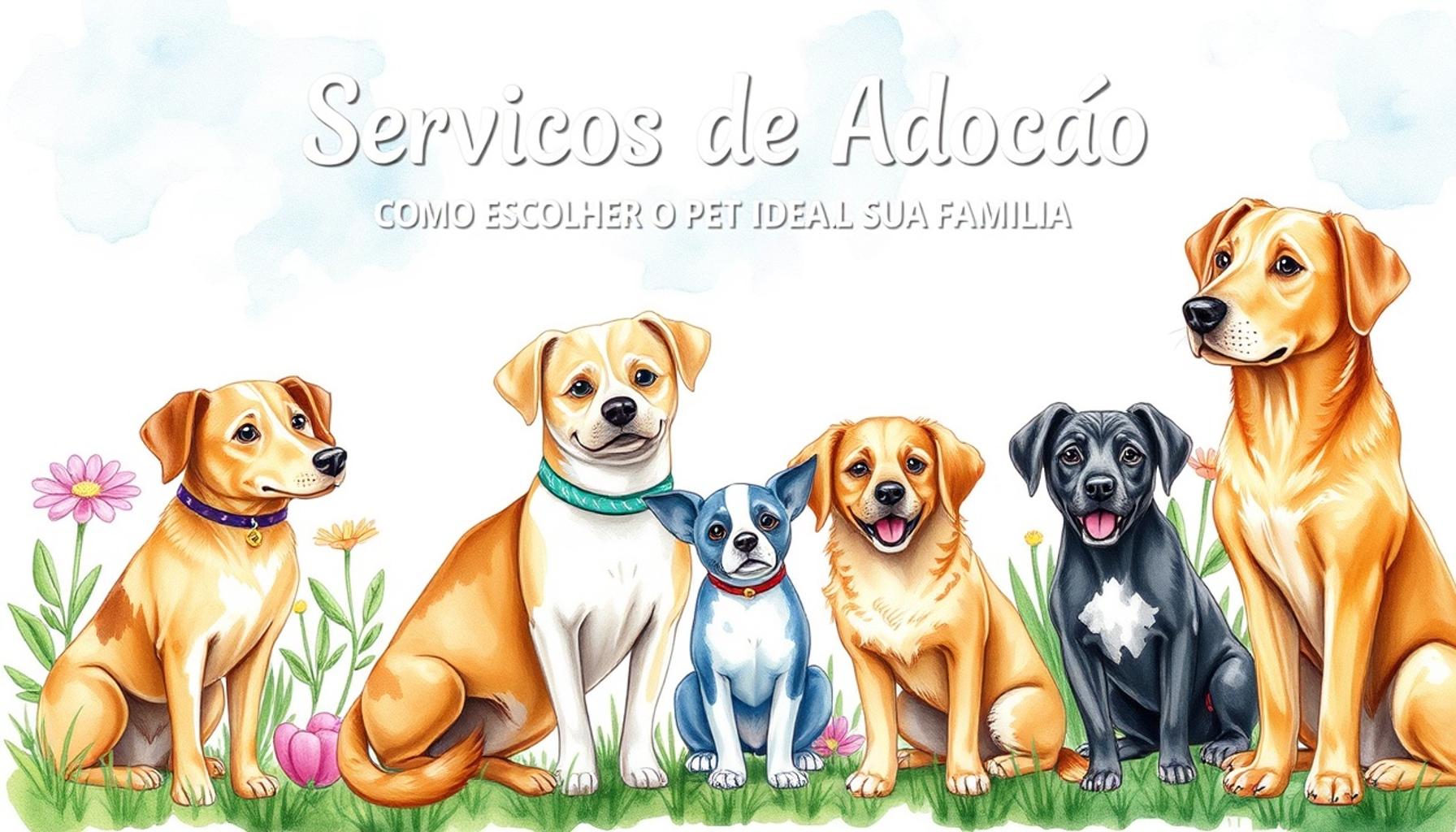Animal Adoption and Diversity: How Different Cultures Approach Pet Adoption

Understanding the Cultural Dynamics of Animal Adoption
Animal adoption is a profound expression of compassion that varies remarkably across different nations. The motivations, practices, and frameworks surrounding the adoption of pets often reflect deeply ingrained cultural values, beliefs, and social norms. This multi-faceted approach to pet adoption gives us a glimpse into how communities worldwide prioritize animal welfare and human companionship.
Across the globe, various countries have developed distinctive adoption frameworks that resonate with their cultural identities. Here are some notable examples:
- United States: In the U.S., the animal welfare movement has garnered significant attention, giving rise to a strong emphasis on no-kill shelters and fostering programs. This means that rather than euthanizing animals due to overcrowding, these shelters strive to find homes for every pet. Organizations often hold community events where potential adopters can meet shelter animals in a relaxed environment, promoting connection and understanding of responsible pet ownership.
- Japan: Japan has an innovative approach to adoption through its popular pet cafes. These establishments allow visitors to interact with various animals, providing a unique opportunity to bond before committing to adoption. This model encourages responsible pet ownership while addressing the growing issue of stray animals in urban settings. The cafes serve as a social hub for both animal lovers and potential adopters to discuss care and adoption processes.
- India: India has embraced a grassroots movement towards street dog adoption through community programs, wherein organizations work closely with local populations to promote the care and adoption of strays. Many activists focus on educating the public about the benefits of adopting street dogs, aiming to change perceptions and reduce stigma surrounding mixed-breed pets.
- Sweden: In Sweden, there is notable government support for responsible pet ownership, which includes promoting adoption through various national campaigns. This commitment reflects a broader societal belief in animal rights, illustrated by high adoption rates from shelters. The Swedish government has also implemented strict regulations regarding pet care, ensuring that animals are treated humanely and that the adoption process is transparent and supportive.
The diverse cultural approaches to animal adoption unveil a rich tapestry of human-pet relationships. Some cultures place significant importance on the responsibilities associated with pet ownership, highlighting long-term commitment and care, while others emphasize the emotional bonds created between humans and animals. This differentiation in perspectives not only shapes the experience of adoption but also influences community attitudes towards stray and shelter animals.
As we explore these varying practices, it becomes clear that understanding global perspectives on animal adoption is essential. This awareness fosters greater empathy and may encourage individuals across cultures to consider adopting a pet. In doing so, we can all contribute to a more compassionate world where animals are valued, cared for, and loved.
LEARN MORE: Click here for insights on balanced nutrition

Diverse Cultural Narratives in Animal Adoption
As we delve into the fabric of animal adoption practices around the world, it’s essential to recognize that each culture brings a unique narrative to the table. These narratives are often shaped by historical contexts, economic circumstances, and social attitudes towards animals. Understanding these diverse perspectives can shed light on how communities prioritize and approach pet adoption.
In the United States, the shift towards adopting pets from shelters has become a significant movement, with a striking focus on ethics and humane treatment. No-kill shelters, which have gained traction over the last two decades, play a central role in this paradigm shift. These facilities aim to preserve animal lives by finding homes for every pet, and they host events like adoption fairs and educational workshops. Statistics indicate that around 3.2 million cats and 3.1 million dogs enter shelters each year, underscoring the urgency for responsible adoption practices to ensure that these animals find loving families. Moreover, fostering programs have emerged, allowing families to temporarily care for pets, thus furthering the potential for adoption.
Meanwhile, in Japan, the culture of pet cafes is revolutionizing the way people perceive animal adoption. These cafes have gained immense popularity, allowing visitors to interact with various animals in a cozy and relaxed environment. The idea is simple yet effective: prospective adopters can spend time with animals before making a commitment. This not only reduces the burden of impulse adoptions but also fosters emotional connections, promoting a sense of responsibility and care. Recent statistics show that approximately 70% of visitors to these cafes are first-time adopters, highlighting the transformative potential of this unique model.
Over in India, the adoption of street dogs has become a grassroots phenomenon, challenging long-standing stigmas associated with mixed-breed pets. Activists and organizations are working tirelessly to change public perceptions, advocating that many of these street dogs are affectionate, loyal, and great companions. The initiative has seen increased community engagement, with educational campaigns designed to raise awareness about the benefits of street dog adoption. Recent studies reveal that adoption rates of street dogs in urban areas have increased by over 40% in the last five years, indicating a cultural shift towards embracing the idea of adopting rather than shopping.
In Sweden, government support has played a pivotal role in shaping responsible pet ownership. National awareness campaigns aimed at promoting adoption highlight the importance of caring for animals. A 2019 survey revealed that over 80% of Swedes favored adopting pets from shelters, demonstrating a strong public endorsement of animal rights. Moreover, Sweden’s implementation of strict regulations regarding pet care further reflects the societal belief in humane treatment of animals. This commitment to adopting homeless pets is not merely a trend; it represents a cultural ethos that values the welfare of animals as a significant aspect of community life.
As we parse through these varied frameworks of animal adoption, it becomes evident that cultural dynamics significantly influence how society engages with stray and shelter animals. By examining the motivations behind these practices, we can uncover a profound connection between human compassion and the responsibility of caring for animals.
| Cultural Approach | Key Characteristics |
|---|---|
| Western Cultures | Focus on pet ownership as a personal right, emphasizing the emotional bond between humans and pets. |
| Eastern Cultures | Often embrace a more communal approach to pets, viewing them as part of the community rather than individual possessions. |
| Indigenous Practices | Many cultures integrate animals into spiritual practices, seeing them as companions with a deeper connection to the earth. |
| Urban vs. Rural | Urban areas may promote adoption events, while rural communities may rely on informal transfers of animals among locals. |
Understanding the nuances of how different cultures approach pet adoption reveals a wealth of perspectives. In Western countries, for instance, the practice of adopting pets from shelters is not only an act of kindness but also a statement about responsible pet ownership. Meanwhile, in many Eastern cultures, pets are often seen as part of the community, fostering a unique perspective that emphasizes collective responsibility and shared joy. Exploring indigenous practices unveils how animals can play a pivotal role in spiritual beliefs, reflecting a connection that transcends the conventional owner-pet relationship. Moreover, the divide between urban and rural settings further shapes how adoption is approached, with cities showcasing structured adoption programs, while rural areas might focus on fostering community ties through informal sharing.The diversity in these approaches underlines the rich tapestry of human-animal relationships globally, encouraging adopters to consider not just the act of adopting, but the cultural significance behind it. Armed with this understanding, potential pet owners are invited to engage more meaningfully in the adoption process.
LEARN MORE: Click here for helpful training tips
Innovative Approaches in Animal Adoption Across the Globe
The cultural narratives surrounding animal adoption are continually evolving, influenced by unique societal values and innovative practices. As we explore various countries, we come across engaging methods that not only raise awareness about the importance of adopting animals but also foster long-lasting relationships between pets and parents.
For instance, in Brazil, the challenge of stray animals has catalyzed a creative response from local communities. Social media campaigns play a vital role in promoting pet adoption, where platforms like Instagram and Facebook are flooded with heartwarming stories and pictures of adoptable animals. Organizations such as Dog Heroes utilize influencers and local celebrities to highlight the urgency and joys of adoption. The success of these campaigns has led to a noticeable rise in inquiries about adoption, particularly among younger generations. In 2021, data suggested that adoption rates in Brazil increased by over 30% year-on-year, showcasing the power of digital platforms in reshaping cultural perceptions about homeless animals.
In South Africa, the concept of “pet fostering” has taken on a prominent role, transforming the pathway to adoption. Organizations like Fostering Hope encourage individuals and families to take in animals temporarily. This initiative not only alleviates overcrowding in shelters but also offers potential adopters a glimpse into the realities of pet ownership. Additionally, fostering enables animals to develop social skills in a home environment, making them more appealing candidates for permanent adoption. Recent surveys indicate that approximately 60% of fostered animals find permanent homes within their first six months, highlighting the effectiveness of this approach in enhancing adoption rates.
The Impact of Legislation and Policies
Legislative measures surrounding animal welfare significantly influence adoption practices. In Germany, stringent laws surrounding animal sales and breeding have solidified a cultural commitment to adoption. The government actively promotes shelters as the primary source for pet acquisition rather than breeders. In 2022, statistics revealed that nearly 80% of newly adopted pets in Germany came from shelters. This legal framework not only encourages responsible ownership but also creates a societal expectation that adopting from shelters is the norm.
And then there is Canada, where provinces like Ontario have introduced innovative measures to combat pet abandonment. Programs that offer financial incentives, such as subsidized veterinary care, have emerged as a means to encourage adoption and responsible pet ownership. These initiatives aim to ensure that pets remain in loving homes, thereby reducing the number of abandoned animals. As of 2023, there was a notable increase in the number of families adopting pets in Ontario, with shelter adoption rates climbing by over 25% in the last year alone.
Embracing Diversity in Adoption Practices
While the approaches to pet adoption vary, they share a fundamental undercurrent of recognizing the intrinsic value of every animal. In various cultures, whether through community engagement, innovative marketing, or supportive legislation, the emphasis remains on creating a bond between humans and animals. By promoting diverse adoption practices, we can create a richer tapestry of understanding that not only brings awareness to the plight of homeless pets but also celebrates the joy of finding a lifelong companion. As we appreciate these global efforts, it becomes clear that each culture contributes something unique to the shared goal of animal welfare and responsible adoption.
LEARN MORE: Click here for valuable insights
Conclusion: A Global Perspective on Animal Adoption
As we delve into the intricate tapestry of animal adoption practices around the world, it is clear that diverse cultural perspectives not only shape how adoptive behaviors evolve but also reflect deeply held societal values. From the innovative social media campaigns in Brazil that engage youthful communities, to the foster care initiatives in South Africa which mitigate shelter overcrowding, these multifaceted approaches reveal a universal commitment to enhancing animal welfare.
The impact of legislative frameworks, as seen in Germany with its strict breeding laws, underscores the importance of creating an environment where adoption is not just encouraged but expected. Meanwhile, Canada demonstrates the potential of proactive measures, such as financial incentives, to ensure that pets are not only adopted but remain cherished family members long-term.
Ultimately, these global insights prompt us to consider how we can further promote responsible pet adoption within our own communities. The stories of resilience and innovation remind us that every culture contributes unique solutions to the shared challenge of animal homelessness. Whether through community engagement, education, or policy advocacy, the continuation of these efforts could drastically change the landscape of pet adoption. As we move forward, let us embrace this diversity in practices and work collaboratively to create a brighter, more compassionate future for all animals.


